Retractable landing gear seems to have fallen out of favor among designers and manufacturers of new piston singles. Cessna hasn’t made a retractable single since the mid-1980s. Today’s most popular single-engine piston airplanes, the Cirrus SR20 and 22, have fixed gear. In fact, 2019 member-company data from the General Aviation Manufacturers Association show a grand total of 37 piston-powered, single-engine retractables were delivered last year by Mooney, Piper and Textron/Beechcraft combined. Contrast that with the 37 copies of only one retractable model—the PA-32-301T Saratoga II TC—that Piper delivered in 2006.
Reasons for the decline in retractable singles’ popularity are many, and include some unpleasant truths about the market for personal airplanes, and the cost of maintaining and insuring them, plus achievements in streamlining the latest fixed-gear designs, which easily can be faster than a retract with the same engine. Yet retractable singles remain popular on the used aircraft market because they offer a lot of transportation value. If the weight and complexity of the retracting system isn’t a drawback to your mission or wallet, “stepping up” to a retractable single might be a good choice. Just be advised that doing so will change the way you fly.
TWO TYPES OF PILOTS
One of the oldest aviation sayings argues there are two types of pilots flying retractables: those who have landed gear-up unintentionally and those who will. The reasons for an unintentional gear-up landing are many, but most often they boil down to distractions in the cockpit caused by (choose one or all) weather, a passenger, an unrelated mechanical problem, ATC or traffic.
All of these distractions, however, can be prevented by the loose nut behind the wheel—the pilot. Remembering to extend the gear before landing is a major part of flying a retractable. But when and how you retract it can be just as important.
In my view, landing gear extension or retraction should be one action in a multistep set of procedures we employ when managing the airplane’s configuration. By including use of the landing-gear switch or handle, as the case may be, into a larger configuration change, we’re less likely to omit it.
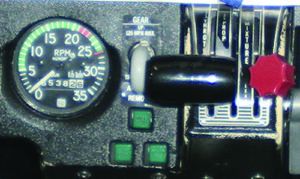
One question that often comes up among pilots trying to match an airplane with their mission is how much a retractable landing gear system can cost in payload. The answer can be elusive since there often isn’t both a fixed- and retractable-gear version of the same airframe, at least not without other significant changes. Cessna’s fixed-gear 182 Skylane and its retractable sibling, the R182 Skylane RG, are candidates but there’s an even better example: Piper’s PA-28R-201T Turbo Arrow III and the fixed-gear/short-lived PA-28-201T Turbo Dakota, of which there were only 89 copies made.
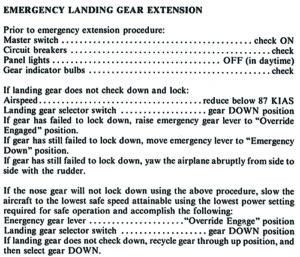
The two types were manufactured contemporaneously, have the same dimensions and use the same engine, a Continental TSIO-360-FB. The only effective difference between them is the Arrow’s foldy landing gear. And 100 pounds of weight: The Aircraft Bluebook Price Digest lists the Turbo Arrow III’s empty weight at 1692 pounds, while the Turbo Dakota comes in at a svelte 1592 pounds, for exactly a 100-pound difference. The two models also have identical maximum gross takeoff weights: 2900 pounds. That’s 100 pounds that can be used for luggage, fuel or even an airframe parachute system. Your mileage may vary.
There are, of course, differences in the two types’ performance. For one example, the Turbo Dakota’s maximum speed is listed as 162 knots, while retracting the Turbo Arrow III’s gear is good for 15 knots, allowing it to top out at 177. Thanks to its higher speed, the Turbo Arrow III also has longer legs: a range of 695 nm versus 591 nm for the draggier Turbo Dakota.
CONFIGURATION CHANGES
As an example, my Debonair has a landing/taxi light on each of its three gear legs, controlled by two switches, one for both main gear and one for the nose. I use these lights all the time when the gear is extended as a visibility-enhancing measure, day or night. Turning them off or on as the case may be is part of my overall extension/retraction procedures, adding two additional discrete motions to the configuration change and, in my opinion, making it more likely that I’ll accomplish all the steps needed at the appropriate time.
The overall procedures have multiple steps. For example, when in a VFR pattern for landing, I do so abeam the runway’s numbers. But before actually reaching for the gear handle, I’ve prepared for extension by reducing power, and adjusting the airplane’s pitch attitude to slow down to at or below the placarded gear extension speed. In my Debonair, the extended-gear (VLE) and gear-operating (VLO) airspeeds are the same: 143 KIAS.
Once I reposition the gear handle to the down position, I use the same hand to turn on the two lighting systems. The switches are in different locations, which means the entire series of steps required to extend the landing gear involves three discrete actions. While I’m flicking toggle switches, the gear mechanism is churning away. I can hear it, even with a noise-reducing headset. I listen for the motor whirring and the increased slipstream noise, plus the motor shutting off. Additional confirmation the configuration change has occurred as I want is available via the airspeed indicator, which better be telling me the airplane is decelerating.
The procedure ends when I look at the gear indicators to verify the green light is illuminated—this model has only two gear lights, a red one for up and a green one for down, plus the mechanical indicator for the nose gear in the base of the center console. Any improper indication or unusual noise is grounds for additional investigation, including leaving the pattern to go orbit somewhere and troubleshoot the problem.
I employ a similar procedure when retracting the landing gear, including ensuring the gear-mounted lighting systems are turned off. The sidebar on page 18 provides a summary of the individual steps I use to extend the landing gear. Only after all these steps are accomplished, and barring an abnormal indication, do I consider the change in the airplane’s configuration to be complete. Let’s amplify these steps a bit, with the idea of getting you to think of using the gear retraction/extension system as part of an overall change in the airplane’s configuration.
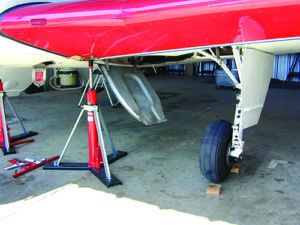
Consider the items shown below right as a bare minimum list of things that need to happen in pretty much this order to ensure effective activation and monitoring of a retractable landing gear system’s operation:
The configuration change is complete when all indications confirm it was a success. Throughout the individual actions listed, there may be other, airplane- or mission-specific steps you may need to take. Insert them as appropriate. And just because you think you’ve accomplished this procedure, don’t fail to include the landing gear’s status in your final pre-landing check, perhaps using the GUMP acronym, or as part of your top-of-climb checks.
Above all, continue flying the airplane throughout the configuration change.
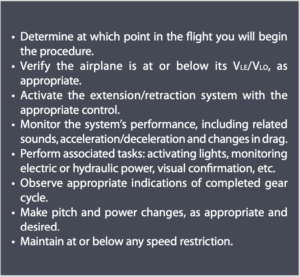
EXTENDING
One decision to make when considering gear extension/retraction procedures as part of a configuration change involves timing: When do you activate the system? As mentioned above, when in a VFR pattern, I time my extension to occur abeam the runway numbers. When flying an IFR approach, I drop the gear when passing over the final approach fix. This is a good choice for a couple of reasons.
One is that extending the landing gear without pitch or power changes results in a descent as the airplane slows. If you’re lucky, it will approximate the desired descent rate as the airplane seeks its trimmed airspeed, requiring only a slight power change or trim adjustment to dial in the desired results.
No matter the airplane, when we extend a retractable’s landing gear, some fundamental changes occur. One of them may be a change in the center of gravity, however slight, as the nosewheel is repositioned. But another one assuredly is deceleration as the additional drag you just created slows the airplane. If power and pitch settings are maintained, the airplane will slow. On its own, the typical piston single will seek its trimmed airspeed and nose down when decelerating.
That may or may not be what you want. When I’m in a VFR pattern and extend my Deb’s gear, I also want to slow down, because I’m getting ready to land. With the additional drag, that means I need nose-up pitch input to maintain altitude while slowing. I’ll also start reducing power further, slowing the airplane to its maximum flap-extension speed, at or below which I’ll add flaps and fly the remainder of the approach.
When operating IFR, the gear goes down at the final approach fix. As long as I’m at or below VLE when I activate the extension, the airplane will settle into roughly a 500-fpm descent at 120 or so KIAS. That’s pretty much what I want to at least begin descending on the three-degree glidepath used by most ILSes and RNAV approaches with vertical navigation capability.
It’s important to note that no extension cycle is complete and verified until performing the final pre-landing checklist. I use the simple GUMP checklist—Gas on the correct tank, Undercarriage down, Mixture set, Propeller set—once stabilized on the final approach.
RETRACTING
Meanwhile, the whole idea of retractable landing gear is to reduce drag, something we don’t want a lot of when taking off and climbing. Accordingly, we might be tempted to retract the landing gear as soon as we can after confirming liftoff. That would be a bad idea, for a couple of reasons.
One is that the airplane may settle back to the takeoff surface, thanks to a gust or a loss of power. Another is that, typically at least, there’s a whole bunch of open runway ahead of us we can use if we need it. Leaving the gear down helps eliminate or minimize the risk of damage if the airplane settles back to the runway, whether by desire or for some other reason.
Another reason is the retraction cycle may create additional drag at a time when you don’t want additional drag. With the Bonanza/Baron series, the retraction cycle begins by opening the inner gear doors and dropping them down from the wing’s underside and into the slipstream. On Cessna’s single-engine retractables, the curved main gear legs pivot as they retract, placing more of the wheel/tire assembly’s surface in the breeze. Both actions increase drag at a time you may not want it.
I use a two-part test to decide when to begin the retraction cycle. One part is to observe and verify a positive rate of climb. Since I have a conventional vertical speed indicator, which lags a bit, once I see a consistent climb rate, I’ve satisfied that test. The other is whether there’s any runway below me on which I can reasonably expect to land if the engine quits. If both tests are met, up comes the gear. Note that I also switch off the gear-mounted lights at this time, while monitoring the retraction cycle per the list on the opposite page.
I consider the retraction cycle complete when I observe the appropriate indications, when I hear the gear motor stop, when the telltale slipstream sounds disappear and when I confirm the airplane is accelerating.
ABBY NORMALS
Retractable landing gear can be useful in what can be called abnormal situations. A classic example is when ATC is late giving you a descent during a landing approach and you wind up high and hot. Slowing to at or below VLE/VLO may be problematic, but once you’ve shed enough speed to extend the gear, its drag will help you get down and slow down at the same time. Once the gear extension cycle completes, you can leave the power at a low setting and push the nose over to accelerate back to the VLE speed, dramatically increasing the rate of descent.
The effectiveness of this procedure varies with how much drag the extended gear produces, how aerodynamically clean the airplane is to begin with and how much power is maintained—it doesn’t do much good to leave the engine at cruise power when trying to descend in a hurry unless you don’t care if the wings stay on. It’s also something that can disrupt your normal cockpit procedure flow when preparing for landing. Tough. When the time comes, use your normal procedures and flow checks. When you get to landing gear extension, bask in the glow of knowing you’ve already accomplished that step.
In a high-and-hot situation like this, you can ask ATC for permission to do a 360-degree turn or two, or you can suck it up and comply with instructions by using all the tools available. You also can use the radio to whine about being left high and hot, of course. It’s up to you.
While landing-gear emergencies are beyond this article’s scope, some unrelated events may be addressed by extending or retracting the landing gear. Ditching procedures come to mind, and—unless your airplane’s documentation suggests ditching gear-down—keep it stowed. On the other hand, an airborne emergency demanding you get on the ground as soon as possible may be more manageable with the gear extended. Dropping the gear on a typical retractable, pulling power to idle and maintaining an airspeed at or below VLE can result in eye-opening—and ear-popping—descent rates. Extending the gear also can help stabilize and slow an out-of-control airplane.
Ultimately, retractable landing gear is another tool we use to extract performance. Doing things the same way each time helps minimize the risk of not doing it.

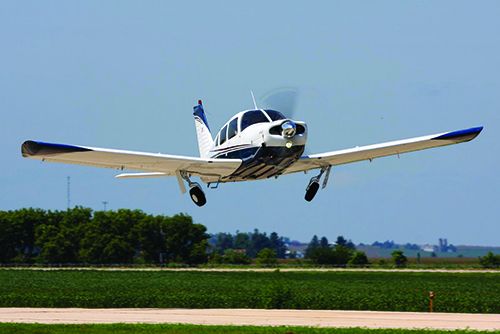



At the end, you suggest that during an emergency, that, “Dropping the gear on a typical retractable, pulling power to idle and maintaining an airspeed at or below VLE can can result in eye-opening…”
I might even suggest that in the event of an emergency, I don’t much care about VLE. All that speed limitation does is help ensure that the gear doors stay attached. If there is a fire or some such, the gear doors are the least of my worries… 🙂
Dave.
I work as a flight instructor. I regularly check-out pilots on a C172 RG. Getting the gear down. I teach put the gear down entering the circuit pattern or turning downwind. I insist that the pilots hand remain on the gear knob until they conform that the gear is down (Visual/light(s)). Then to check the gear is down in the pre-landing checks. On final the motto ‘P-U-F Windsock’ is used. Prop. Gear – Down, Flaps as required. Then check the windsock to compare it to the ATIS. Three shots at ensuring that the gear is down. many a pilot has forgotten to do that.
“Meanwhile, the whole idea of retractable landing gear is to reduce drag, something we don’t want a lot of when taking off and climbing. Accordingly, we might be tempted to retract the landing gear as soon as we can after confirming liftoff. That would be a bad idea, for a couple of reasons.”
This is old school thinking.
While it may be bad for an anemic, 12V-slow, inner-door-opening-adds-more-drag in a lower-powered 50-yr old Debbie, most of the time the temporary drag penalty is so minimal to the climb it is ultimately irrelevant.
As to the argument to raise the gear when you’re out of usable runway, what is your measuring stick for this point? No more runway visible under the nose in a shallow climb? Vy climb? Something different?
Consider this. Run your takeoff numbers to the 50’ obstacle, and run your landing numbers from the same obstacle.
____________/ + \____________ = your usable runway, right? Not so fast. You forgot the ‘toss’ factor. At 50’ you have an energy vector in the vertical from the climb. Fading quickly to be sure, but that’s more ‘usable’ runway that doesn’t have a performance chart for.
____________/¯ ¯ ¯ ¯\____________ = your usable runway. Now, I don’t have a retractable-gear airplane POH handy but I do have one for a Cirrus SR22T that I fly. Here are its numbers for a 30ºC day at a pressure elevation airport of 3,000’ MSL:
Takeoff: 2,767’
Landing: 3,113’
Toss: ?????
________________
Total 5,880’ PLUS the toss factor. Let’s just round it to 6,000’.
WHEN are you out of usable runway? Also, the higher you get past 50’ AGL you are building both kinetic and potential energy, rapidly.
Finally, consider the effects of landing gear up. Just about the most survivable ‘accident’ you can ever experience. Ever seen anyone land gear up? I have. That ground scrape tends to be much shorter than you can accomplish with drag through wheel brakes (okay, and aerodynamic braking) alone. Shorter length of runway required sounds safer to me in this emergency.
Every airplane is different, of course, but consider the above when flying RG’s. For the Debbie I *might* wait a skosh longer to pull the gear up, but by and large I think the safer, muscle-memory bet is positive rate, gear up.
I have a retractable gear aircraft that has a 216 mph gear speed. Trim changes during retraction or extension are almost undetectable and the control forces so light that you can fly an hour of landings without ever touching the trim. Touchdown speed is limited to not less than 50 mph and touchdown at any speed up to 100 is not a problem. Gear movement is not by a switch but by 37 cranks of a handle so it is an event that is not easily overlooked! Since it takes some time (and lots of arm) to lower the gear it is used as a drag device when slowing for entering the pattern early on as the gear warning horn comes on at 1500 rpm and normal downwind with the gear extended is 1600 rpm, and of course the gear stays down during pattern work! It’s fun to fly a 1947 Bellanca Cruisair!